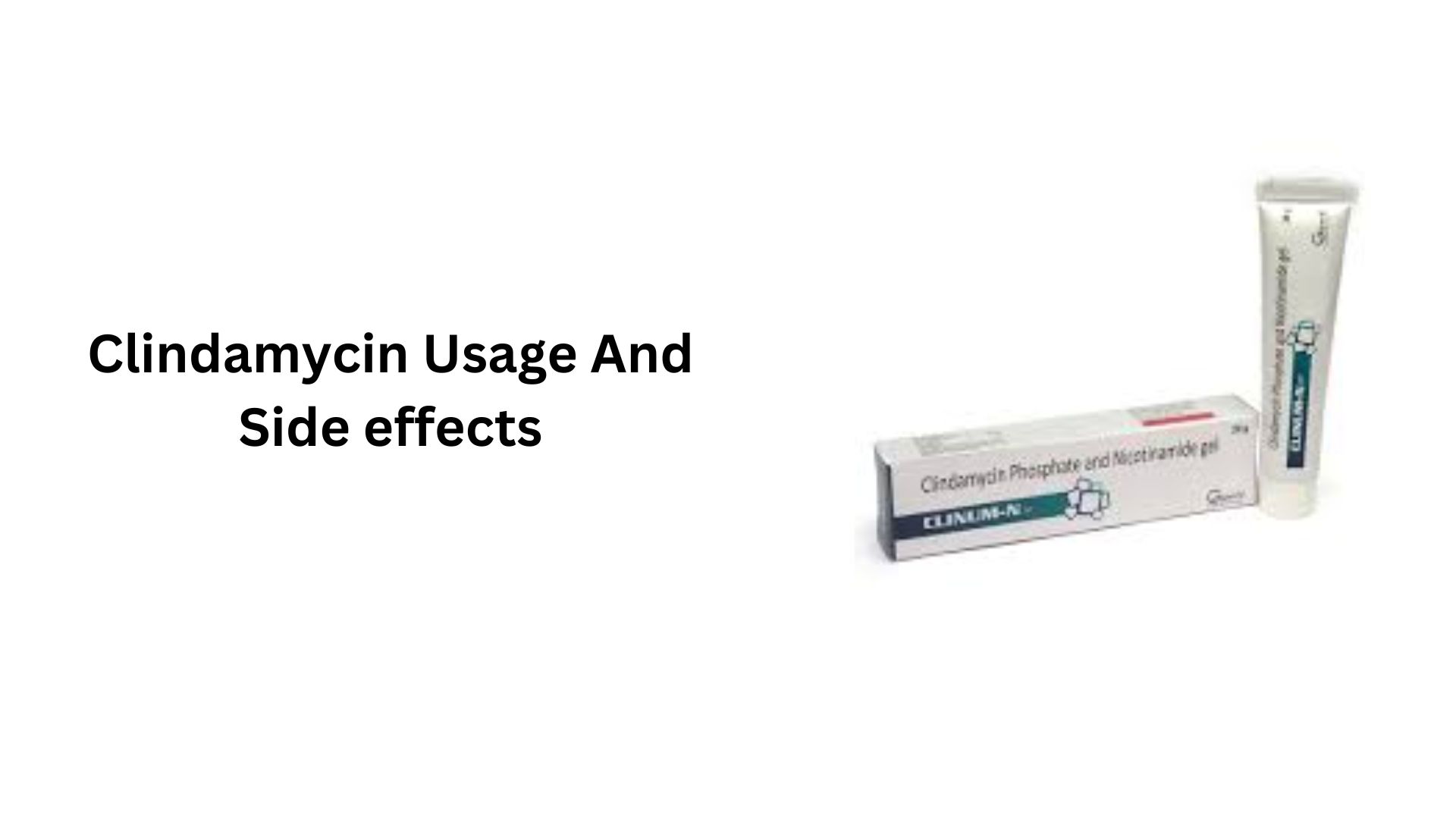An antibiotic called clindamycin is used to treat a variety of bacterial illnesses.
Uses Of Clindamycin
Here are common uses of Clindamycin:
- Bacterial Infections:
- For the treatment of a variety of bacterial infections caused by susceptible organisms, clindamycin is administered.
- Skin and Soft Tissue Infections:
- Cellulitis, abscesses, and wound infections are among the soft tissue and skin infections that are frequently treated with it.
- Acne:
- It can be used topically or taken orally to treat acne vulgaris, especially when other treatments are not working.
- Respiratory Tract Infections:
- When susceptible bacteria cause respiratory tract infections including pneumonia and lung abscesses, It can be used to treat them.
- Bone and Joint Infections:
- It may be included in the process of treatment for infections of the bones and joints.
- Intra-abdominal Infections:
- Peritonitis and abscesses are some of the intra-abdominal infections for which it is suggested.
- Female Reproductive Tract Infections:
- Pelvic inflammatory disease (PID) and other infections of the female reproductive system can be treated with clindamycin.
- Bacterial Vaginosis:
- It can be applied topically or taken orally to treat bacterial vaginosis.
- Tooth Infections:
- It is sometimes employed to treat infections of the teeth, including dental abscesses.
- Joint Infections:
- treatment option for joint infections.
- Bloodstream Infections:
- It may be used to treat bloodstream infections caused by bacterial susceptibilities.
- Toxoplasmosis:
- It is used to treat the parasite infection toxoplasmosis, often in conjunction with other medications.
- Streptococcal Infections:
- Group A streptococcal infections are among the streptococcal infections that it effectively treats.
- Malaria Prophylaxis:
- In certain regions, clindamycin may be used in addition to other medications for the prevention of malaria.
- Dental Prophylaxis:
- It can be employed as a preventative measure before dental treatments in patients who are allergic to penicillin.
Patients must take Clindamycin exactly as directed by their doctor and finish the entire course of treatment. An early cessation of treatment or missing doses can lead to antibiotic resistance. It use is determined by the particular bacterial infection, the unique characteristics of the patient, and the efficiency of the antibiotic. Like with any medications, people should let their healthcare provider know about any worries or adverse effects.
Side effects Of Clindamycin
Here are common side effects of Clindamycin:
- Gastrointestinal Disturbances:
- Nausea and vomiting
- Diarrhea or loose stools
- Abdominal pain or discomfort
- Pseudomembranous Colitis:
- The excessive production of Clostridium difficile germs brought on by clindamycin use can result in pseudomembranous colitis, a severe form of colon inflammation. Severe diarrhea, cramps in the abdomen, and fever may follow.
- Esophagitis:
- Rarely, esophageal inflammation brought on by clindamycin might result in pain and difficulties swallowing.
- Skin Reactions:
- Skin rash or itching may occur
- Even though they are rare, severe skin reactions that need to be treated right once include toxic epidermal necrolysis and Stevens-Johnson syndrome.
- Hypersensitivity Reactions:
- Clindamycin allergies may appear as hives, itching, or swelling of the lips, tongue, or cheeks.
- Although they are rare, severe allergic responses, or anaphylaxis, need to be treated immediately.
- Liver Function Changes:
- Temporary changes in liver enzyme levels may result from clindamycin; however, serious liver issues are uncommon.
- Blood Disorders:
- may occasionally have an impact on blood cell counts, which could result in diseases such as agranulocytosis or leukopenia.
- Jaundice:
- Some people can experience jaundice, or yellowing of the skin or eyes, which is indicative of liver malfunction.
- Respiratory Distress:
- Severe allergic responses require emergency medical intervention because they can cause respiratory difficulty.
- Renal Impairment:
- Rarely, clindamycin may be associated with kidney issues that compromise renal function.
- Clostridium difficile Infection:
- Clindamycin, like many other antibiotics, may raise the chance of contracting Clostridium difficile, which can result in extremely bad diarrhea.
- Thrombophlebitis:
- Vein inflammation, or thrombophlebitis, is one of the possible injection-site responses.
- Muscle Pain:
- Some people may feel weak or have pain in their muscles.
Patients need to inform their healthcare physician right away if they experience any unexpected or severe symptoms. Although Clindamycin is well tolerated by many, reactions can differ from person to person. During treatment, medical professionals keep an eye out for any adverse effects in their patients. Clindamycin should only be used after consulting with a healthcare provider and taking the patient’s unique health history, potential dangers, and benefits into account.
